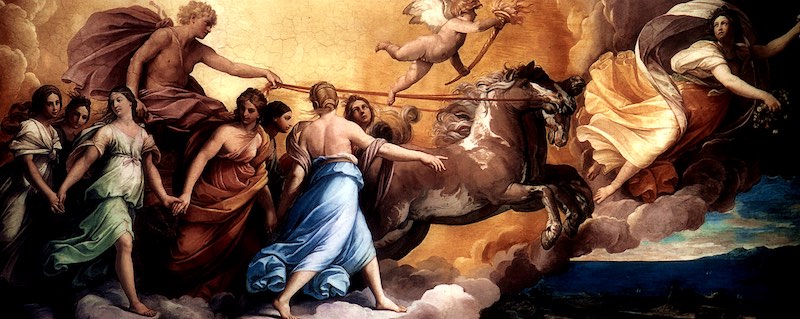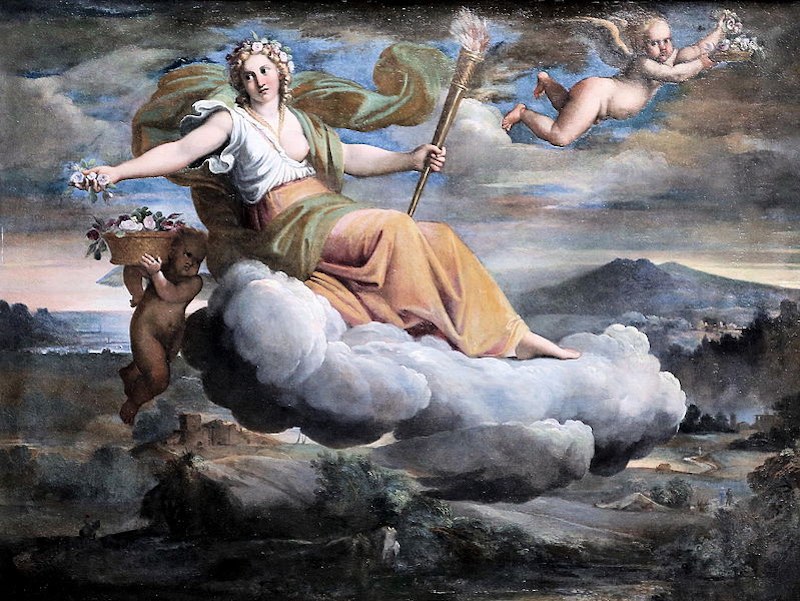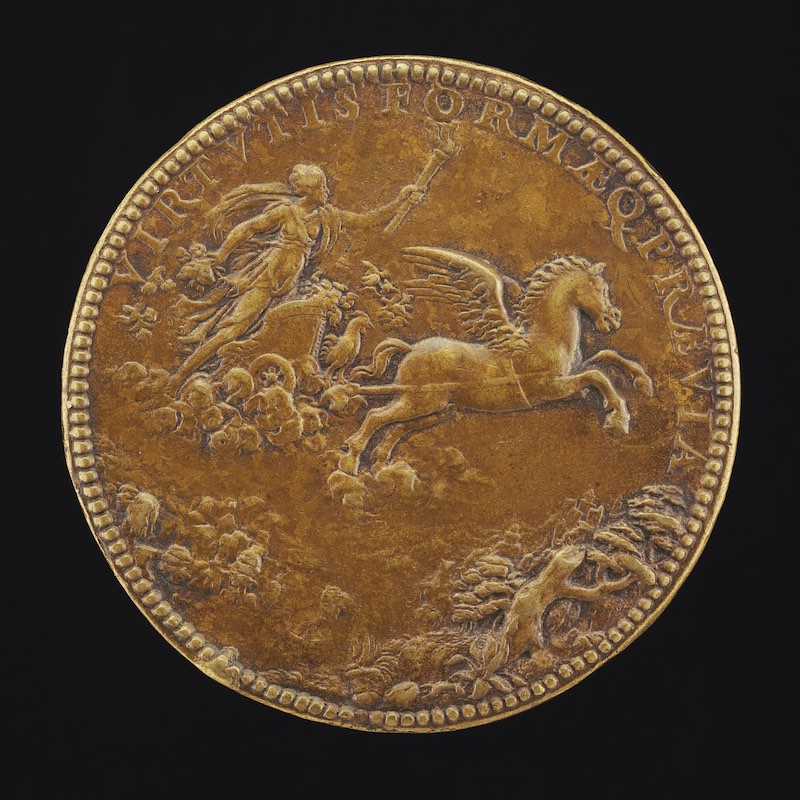Images of Aurora, Goddess of the Dawn
In this poem Pulter depicts the goddess Aurora sporting long curling golden hair adorned with jewels and flowers, possessing blushing cheeks and clear eyes, exposing a breast, and wearing purple robes fringed with gold. Artists have painted the goddess of the dawn in varied ways, as can be seen below with examples from the Italian Renaissance artists Guido Reni, Annibale Carracci, and Jacopo Nizzola da Trezzo.
As noted by Noa Leibson in “Aurora: A Painting of the Coming Dawn,” this fresco by Guido Reni was commissioned by Cardinal Scipioni Borghese for the ceiling of his garden house, the Casino dell’Aurora, in Rome. Read from left to right, the painting depicts the Horae, or goddesses of the hours, flanking Apollo’s chariot. Apollo is guided by a personified morning star (the flying baby), and then Aurora, holding flowers and wearing a billowing gown, who heralds the day. Aurora paves the way vividly, powerfully leading the group.

Guido Reni, “Aurora,” Casino dell’Aurora, completed in 1614. Public Domain.
See also: Noa Leibson, “Aurora: A Painting of the Coming Dawn,” Wonders of Nature and Artifice, edited by Felicia Else and Kay Etheridge, 2017.
In Annibale Carracci’s painting “Dawn with a Torch Scattering Flowers,” Aurora is depicted with flowers in her blonde curled hair, seated on a cloud, scattering flowers and holding a torch. Her breast is exposed and she is flanked by winged cherubs. Though she brings the dawn, her posture suggests a calm and decorous floating rather than aggressive action. This image was chosen for the cover of Alice Eardley’s edition of Pulter’s Poems, Emblems, and the Unfortunate Florinda, Iter / Centre for Reformation and Renaissance Studies, 2014.

Annibale Carracci, “L'Aurore parsemant des fleurs et tenant un torche,” c.1602-1603, Musée Condé, Chantilly, France.
In Jacopo Nizzola da Trezzo’s bronze, “Aurora Riding through the Heavens,” on the reverse of a coin, the goddess, one breast bared, rides on a chariot drawn by a horse on which a rooster sits ready to announce the dawn, holding a torch in her outstretched hand. The medallion captures a sense of movement and power in the goddess.

Jacopo Nizzola da Trezzo, “Aurora Riding through the Heavens [reverse],” 1552, National Gallery of Art, Washington, DC